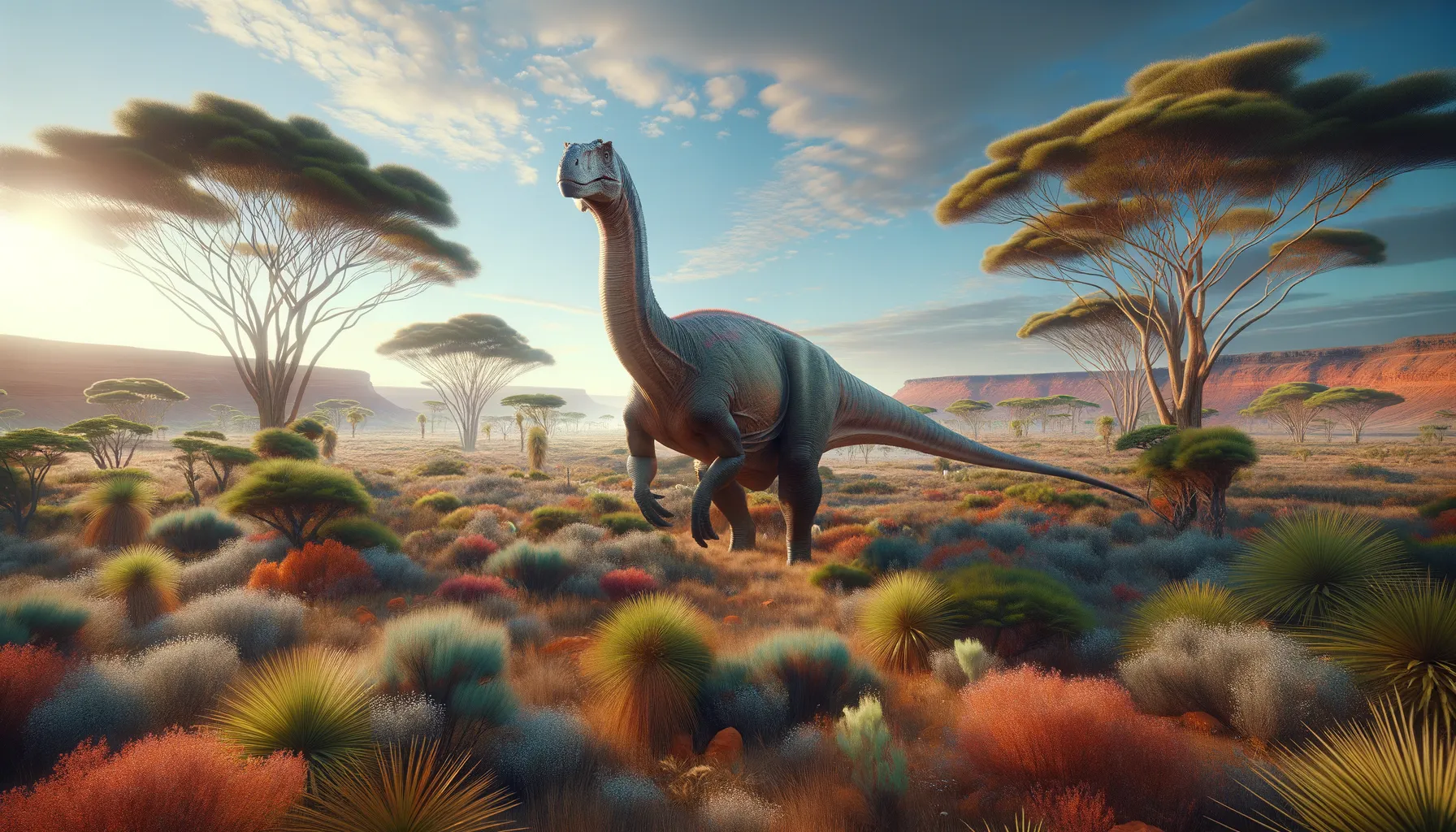
Wintonotitan
Gentle giant of the ancient outback.
Period
Cretaceous
Length
Approximately 55 feet long.
Height
Could reach up to 15 feet tall at the hips.
Weight
Estimated to weigh around 15 tons.
Wintonotitan was a herbivorous dinosaur from the Cretaceous period, known primarily from fossil discoveries in Australia. As a member of the sauropod family, it was notable for its long neck and tail, which helped it reach high vegetation. Its discovery has provided valuable insight into the diverse ecosystems of ancient Australia and the types of environments sauropods adapted to during their evolution.
Diet
As a herbivore, Wintonotitan primarily fed on plant material such as ferns, cycads, and conifers. Its long neck enabled it to reach vegetation that was high above the ground.
Hunting
Wintonotitan did not hunt as it was a plant-eater. Instead, it likely foraged for food across vast areas, utilizing its massive size and long neck to access diverse plant types.
Environmental challenges
Living during the Cretaceous period, Wintonotitan faced challenges such as fluctuating climates and the presence of other large herbivores competing for resources. Changes in plant availability and evolving predator threats also required adaptation. Additionally, as a sizable sauropod, sustaining itself with adequate food and water would have been a constant task.
Speed
Moderate pace similar to other sauropods.
Lifespan
Likely to live for several decades.
First discovery
First discovered in Queensland, Australia.
Fun Facts
- Wintonotitan was a large plant-eating dinosaur that lived about 95 million years ago in what is now Australia.
- It was named after the town of Winton in Queensland, where its fossils were first discovered.
- Wintonotitan belonged to a group of dinosaurs known as sauropods, famous for their long necks and massive bodies.
- Despite its size, Wintonotitan likely had a small head compared to its enormous body.
- The fossils of Wintonotitan have helped scientists understand more about the diversity of dinosaurs in Australia during the Cretaceous period.
- Wintonotitan's bones were found in the Winton Formation, a rich fossil site that has produced many other dinosaur finds.
- Paleontologists believe that Wintonotitan may have traveled in herds, similar to modern-day elephants, to find food and avoid predators.
Growth and Development
Like other sauropods, Wintonotitan likely experienced rapid growth in its early years to escape predation. Over time, it grew into a large, sturdy creature with a robust frame. Its development relied on a rich diet of vegetation and a stable environment, allowing it to achieve its massive size.
Habitat
Wintonotitan inhabited open woodlands and river valleys in what is now Australia. This habitat provided abundant plant life and water sources, essential for sustaining such a large herbivore. The environment was dynamic, with seasonal changes influencing the distribution of resources.
Interaction with other species
Wintonotitan likely coexisted with various other dinosaur species, both herbivorous and carnivorous. While competition for resources was probable with other large plant-eaters, interactions with predators might have been limited by its size and the ability to move in herds for protection.
Natural lifespan
Wintonotitan may have lived up to 70 years in the wild.
Reproduction
Wintonotitan, like most sauropods, likely laid eggs in nesting grounds. These nests would have been buried or hidden to protect them from predators. Once hatched, young Wintonotitans quickly grew to a size that decreased their vulnerability.
Social behaviour
Wintonotitan may have lived in herds, providing protection through numbers against predators. Social structures likely included specific roles, with adults watching over the young. This communal lifestyle not only aided in defense but also facilitated finding food.
Fossil locations
Fossils of Wintonotitan have primarily been found in Queensland, Australia, providing key insights into the region's ancient fauna. Excavations in this area have revealed various bones, including vertebrae and limb bones. These discoveries have helped paint a broader picture of dinosaur life in this part of the world.
